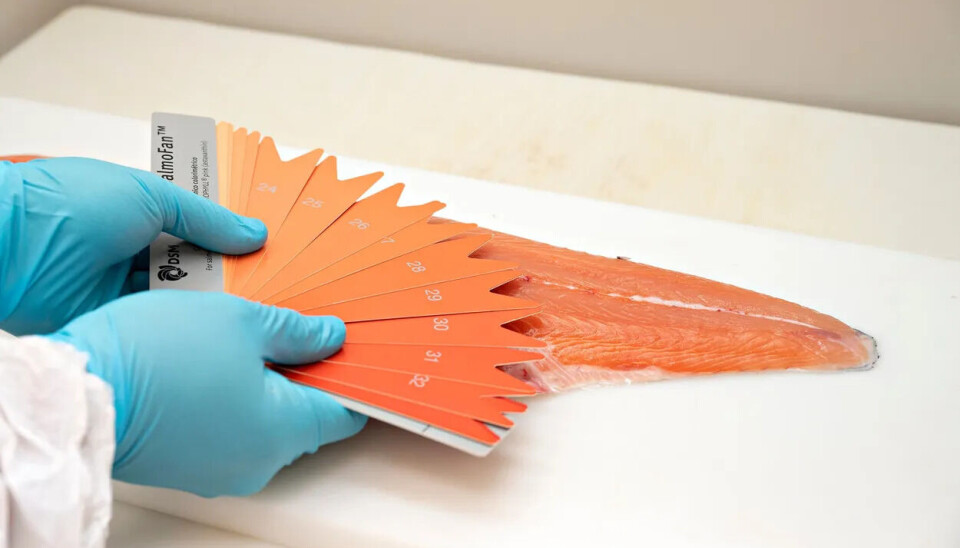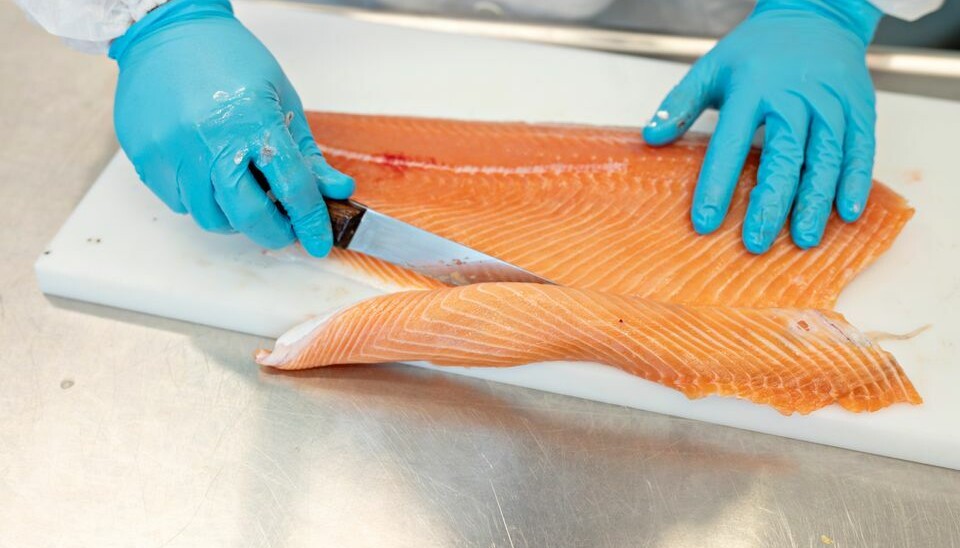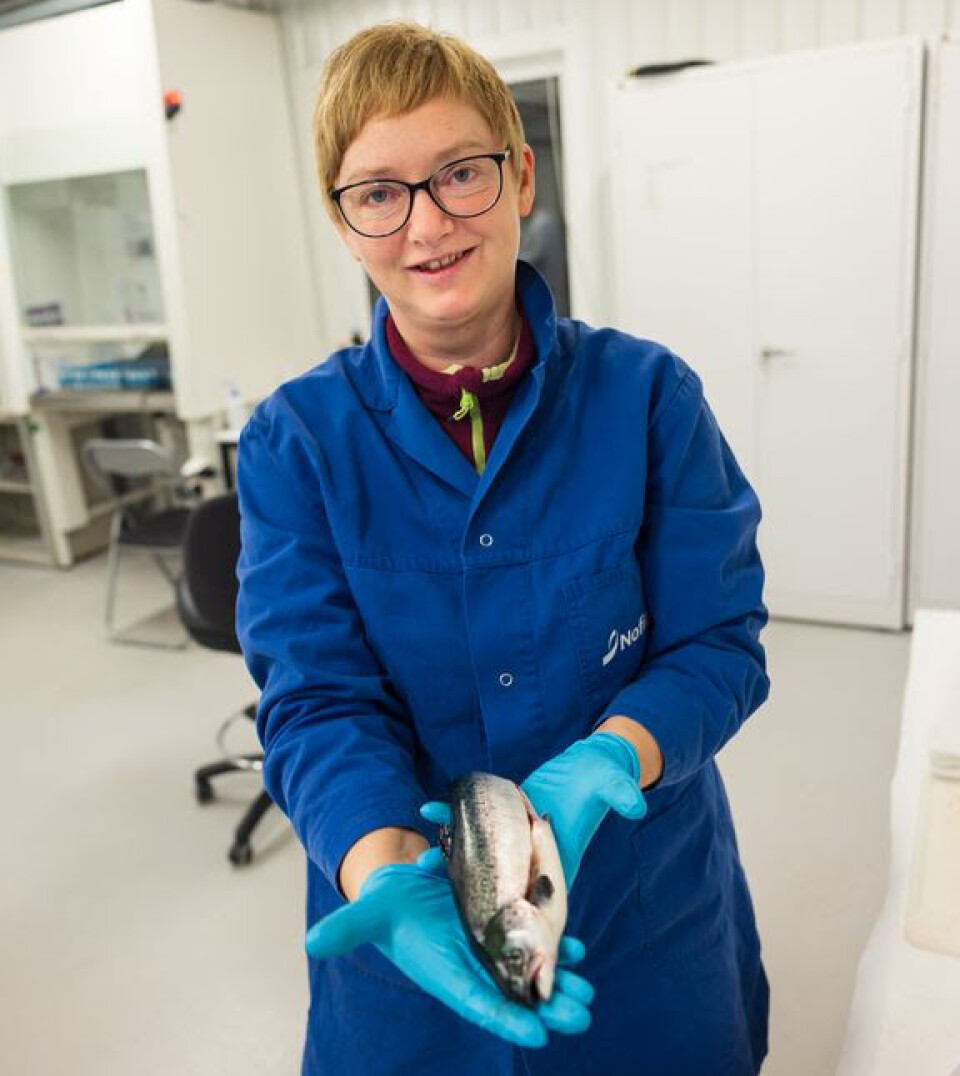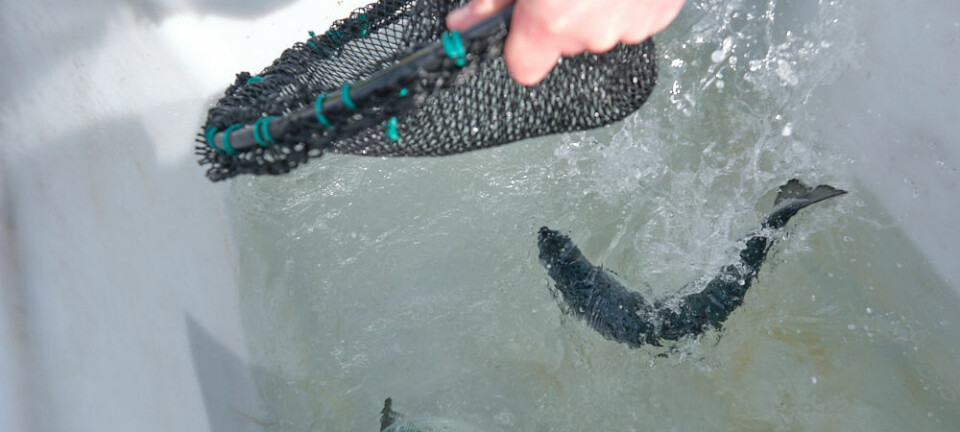
Stressed salmon become paler
More astaxanthin is used in salmon feed than before, but there is less colour in the fillet.
In a recently completed project from Norwegian research institute Nofima, scientists found that stress reduces the colour of fish fillets. But there is one exception.
The colour of the fillet is due to the salmon's ability to store the pigment astaxanthin in its muscle. This pigment is made by marine algae and is found in the food chain in the ocean. It is a powerful antioxidant, and the salmon can also use it to make vitamin A. This vitamin has many important functions in the body, especially for the immune system, skin and mucous membranes, fat metabolism and vision.
Both astaxanthin and vitamin A are added to the salmon feed to ensure sufficient levels of health and growth. The pink colour of the salmon fillet is also important to make it look attractive in the shop.
“However, the needs for vitamins and antioxidants can change when salmon are exposed to stress, and we still do not know enough about how the environment in which the salmon lives affects the colour of the fillet,” says senior researcher at Nofima, Trine Ytrestøyl, in a press release.

Stessed by treatment
Stress causes the body to produce reactive compounds that can damage cells. Antioxidants protect living organisms from damage by neutralising such compounds. Salmon exposed to stress may therefore have an increased need for antioxidants such as astaxanthin.
Salmon are exposed to a lot of stress during their lives. The problems with sea lice have meant that salmon often have to be treated for lice. This involves them being crowded together, while the oxygen level in the water becomes low. This is very stressful for the salmon.
"In research we have done, we have looked at data from commercial facilities. We saw that salmon that had had many treatments against sea lice had a paler fillet," says Ytrestøyl.
The importance of the feed for fillet colour
Ingredients in the feed can affect the colour of the fillet.
"We have previously seen that the marine omega-3 fatty acids EPA and DHA have a positive effect on fillet colour. These fatty acids are less abundant in the feed when marine feed ingredients are replaced with plant-based ingredients," explains Ytrestøyl.
Vitamin A is also an antioxidant that is abundant in marine food chains. When the salmon's feed has changed from containing mainly marine raw materials to containing plant raw materials, the content of vitamin A in the feed has also decreased.
"It is possible that salmon will produce more vitamin A from astaxanthin when there is little in the feed, but the effect of this on the content of astaxanthin in the fillet has not been studied much," explains Ytrestøyl. Nor has it been investigated how stress affects fillet colour.

In one experiment, salmon were fed diets containing three different concentrations of vitamin A and two concentrations of astaxanthin. The levels tested in the experiment reflect the variation found in commercial salmon diets. The salmon were stressed by being crowded together while the oxygen level in the water was reduced, similar to treatment for sea lice. This was done several times per week for five weeks.
Too much of a good thing?
When the salmon were not stressed, the highest level of vitamin A in the feed had a negative effect on the color of the fillet. Less astaxanthin was absorbed in the intestine and digested when there was a lot of vitamin A in the feed. This may be a form of regulation to protect the salmon from excessive levels of vitamin A, which have been shown to be harmful.
The salmon that were exposed to stress had less astaxanthin in their fillets compared to salmon in the control group. But there was one exception: salmon that had been fed a diet high in both vitamin A and astaxanthin did not develop paler fillets as a result of stress.
There was therefore a different effect of high levels of vitamin A in the feed when the salmon were stressed compared to when they were not exposed to stress. This may indicate that the needs for vitamins and antioxidants change when the salmon are exposed to a stressful environment.
Nutrition and environment must be seen in context
The results of the research show that salmon exposed to stress have a paler fillet colour, and that the need for antioxidants can change when salmon are exposed to stress.
"Stress should be reduced as much as possible, but cannot be completely eliminated in farming. To ensure that the fish have good health and quality, it is important that the amount of vitamins and antioxidants in the feed is adapted to the stresses that the fish face," concludes Ytrestøyl.
The results are from the project "Dietary factors and physiological mechanisms interact and control pigmentation of salmon muscle" which is funded by the Norwegian Fisheries and Aquaculture Industry's research funding. The project runs in collaboration with NTNU - Norwegian University of Science and Technology, and feed producer Skretting.



































































